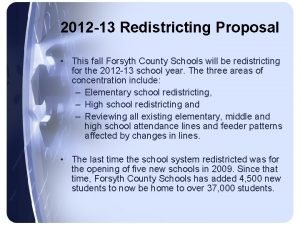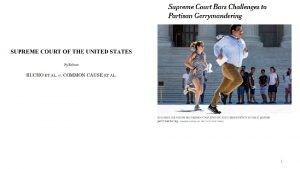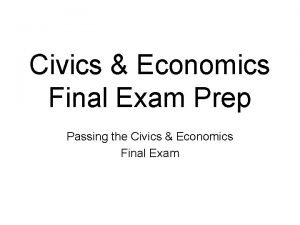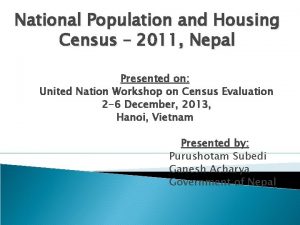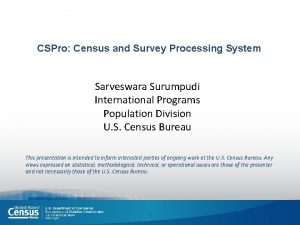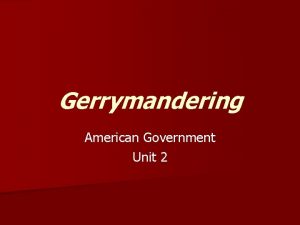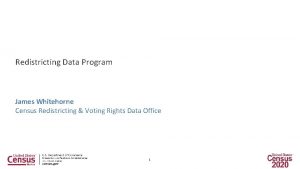Redistricting and Gerrymandering Civics Ms Heading US Census








- Slides: 8

Redistricting and Gerrymandering Civics – Ms. Heading

US Census: �counts the population every ten years https: //www. census. gov/history/www/through_the_decades/overview/1790. html �determines how many people serve in the House of Representatives for each state � 1790: 65 Representatives in the House (1 member for 30, 000 people) � 1910: 435 Representatives in the House (based on 2010 population = 1 member per 713, 000 people)

Apportionment: �the process of distribution of seats in the House of Representatives among the states �after the US Census, the number of seats allotted to a state is adjusted (aka: apportionment)

Redistricting: �the process of drawing new boundaries for congressional districts (federal government) �state legislatures are in charge of redrawing the boundaries for congressional districts after the US Census determines how many seats that state will be apportioned or assigned �congressional districts should reflect and even distribution of the population

Gerrymandering: �the drawing of congressional districts to produce an electoral outcome that favors a particular outcome (favor a political party or race) �Name Origin - the term coined from combining the last name of the Massachusetts governor first credited with politicizing the redistricting process, Elbridge Gerry, and the word "salamander" which looked like the oddly shaped district that Gerry had created

Rules of Gerrymandering: District lines must be continuous (drawn with one unbroken line) 2) Voting Rights Act of 1965 makes it illegal to redistrict to dilute minority strength 3) Redrawing districts to enhance minority representation is constitutional if race is not the "predominate factor“ 4) States may redistrict more than every ten years. 1)

Gerrymander Exercise �R = Republican D = Democrat I = Independent �Board of Elections records provide information on voters My State 2010 TASK: 1) Place a R, D, or I in the blank district boxes to reflect the majority party in the 7 Districts represented QUESTION: 1) Is there a balance of the major political parties in the state as a whole?

Gerrymander Exercise �R = Republican D = Democrat I = Independent My State 2012 TASK: 1) Based on your assigned political party and with a partner, Draw the district lines to reflect the 2010 population change RULES: All districts must 1) All districts must contain the same number of population units 2) Have contiguous lines (no split districts)
 San joaquin county redistricting
San joaquin county redistricting Forsyth county redistricting
Forsyth county redistricting Gerrymandering dynamic programming
Gerrymandering dynamic programming Princeton university’s gerrymandering project
Princeton university’s gerrymandering project Civics and economics final exam study guide
Civics and economics final exam study guide Civics and economics definition
Civics and economics definition National population and housing census 2011
National population and housing census 2011 Census and survey processing system
Census and survey processing system Sejarah perkembangan civics dan pendidikan kewarganegaraan
Sejarah perkembangan civics dan pendidikan kewarganegaraan

